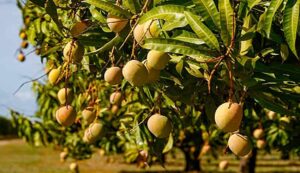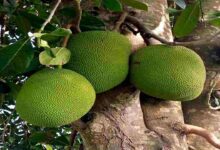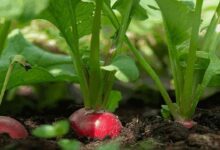Mango Farming Tips: To increase mango production, follow these 10 tips today
Mango Farming Tips: In North India, mangoes are very popular and are referred to as the king of fruits. Climate, soil quality, and appropriate management techniques are all necessary for its effective growing and blooming phase. In North India, the following agroclimatic conditions are crucial for mango blossoming, including…

1. Temperature’s Function
When it comes to mango blossoming, temperature is crucial. Mango trees thrive best in temperatures between 24°C and 30°C. The ideal temperature range for floral growth is between 10°C and 15°C, with a maximum temperature of 32°C. 20 to 25°C is the ideal temperature during blooming. blooming may be postponed if the lowest temperature at blooming is below 15°C. Flower drop occurs when temperatures rise over 35°C during blossoming.
Winter’s effect: Mangos need moderate temperatures (10°C to 15°C) in the winter. This cold encourages the induction of flowers. Increasingly severe winters might be detrimental to trees.
2. The impact of humidity and rainfall
Rainfall that is balanced: 750 to 1200 mm per year is thought to be optimal for mango cultivation. Rainfall during blossoming is detrimental since it might lead to flower drops.
The growth of flowers requires a moderate level of humidity, but too much humidity might encourage fungal illnesses. During blooming, the humidity should be between 50% and 70%.
3. The sun
Mango trees need plenty of sunshine to thrive. It needs at least 6 to 8 hours of direct light every day. Pollination ability and bloom quality are both improved by this light.
4. The Soil’s Function
Type of Soil: Mangos grow best in sandy or silty loam soil. The ideal pH range for soil is 6.5 to 7.5.
Drainage: For flowers to develop healthily, the soil must have enough drainage. Waterlogging may lead to blossom drop and harm roots.
Function of Nutrients: The proportions of nitrogen, phosphorus, potash, and micronutrients in soil should be balanced. Zinc and boron are particularly important for blooming.
5. Aerodynamic and Wind Factors
Pollination and bloom quality are significantly impacted by wind.
Light breeze: Pollination and floral growth benefit from light wind.
Strong winds have the potential to harm blooms and slow down the process of ripening.
6. Management of Irrigation
Before they bloom, mango plants need less water.
Timing of irrigation: Both during flush and after blooming, irrigation is required.
Water quality: Irrigation should be done using clean, salinity-free water.
7. Management of disease and pests
The climate affects how illnesses and pests are managed during blooming.
Anthracnose and powdery mildew are two diseases that may harm flowers in high humidity conditions.
Management of pests: During blooming, pests like mealybugs and thrips are more active. These need to be handled promptly.
8. Methods of agricultural management
Pruning: The tree’s energy is directed toward the growth of new blossoms by removing old, dry branches prior to blossoming.
Mulching: Mulching helps suppress weeds and preserve soil moisture.
Fertilizers and manure: Before blooming, a balanced amount of chemical and organic fertilizers should be applied.
9. The impact of geographical differences
North India’s many areas have diverse climates. For instance:
Flower decrease may result from the high summer temperatures in Western Uttar Pradesh and Haryana.
During the monsoon, Bihar and eastern Uttar Pradesh get a lot of rainfall, which might lead to blossom drop.
10. Climate change’s effects
In recent years, climate change has had an impact on the blossoming process.
Rainfall irregularities: Unusual rainfall might interfere with floral induction and growth.
Extreme cold or heat: Unusual temperatures may degrade flowers.

